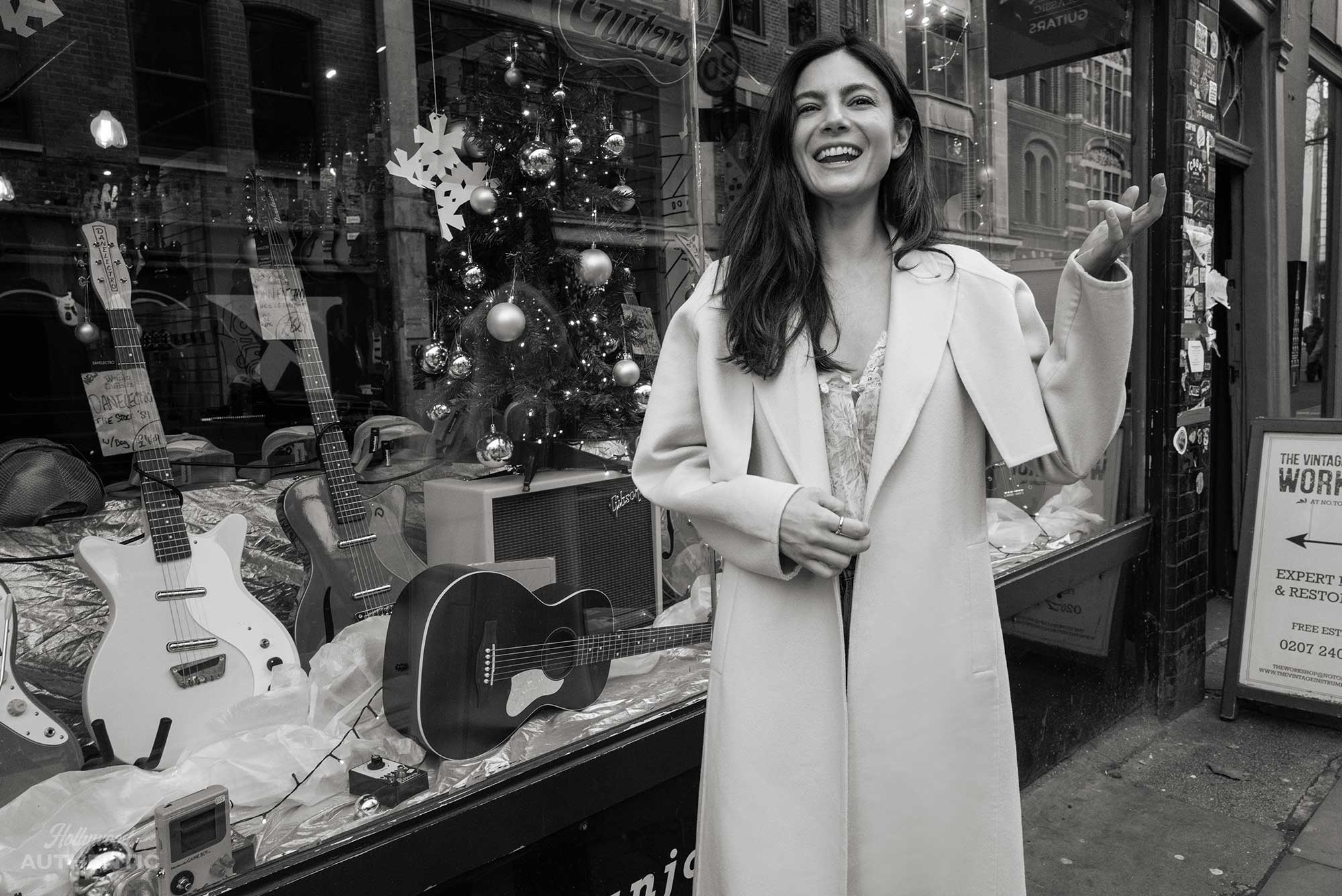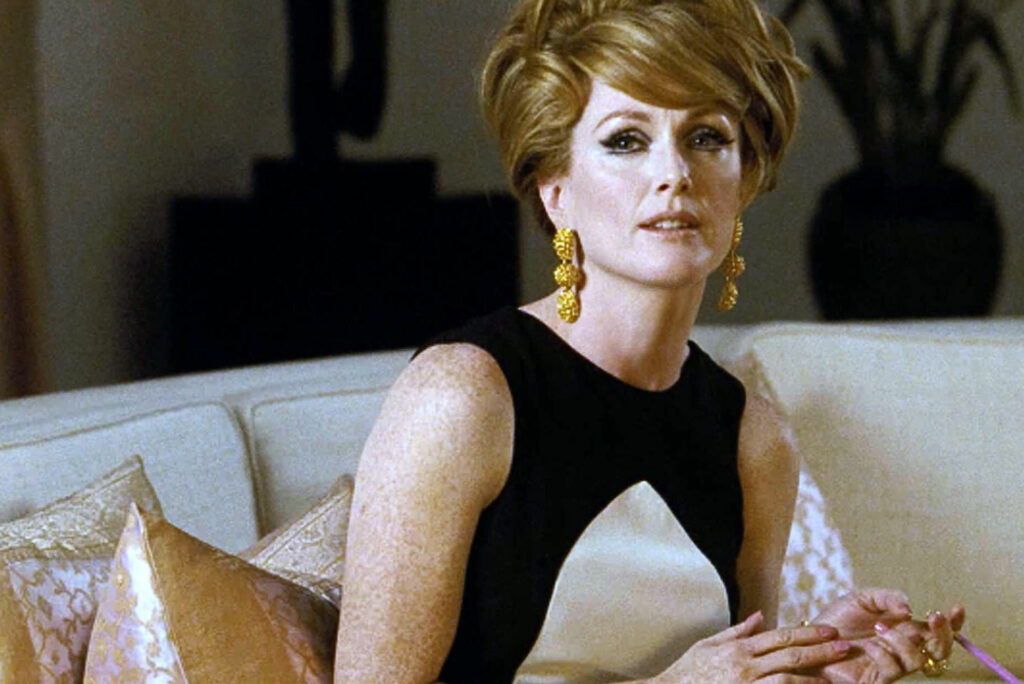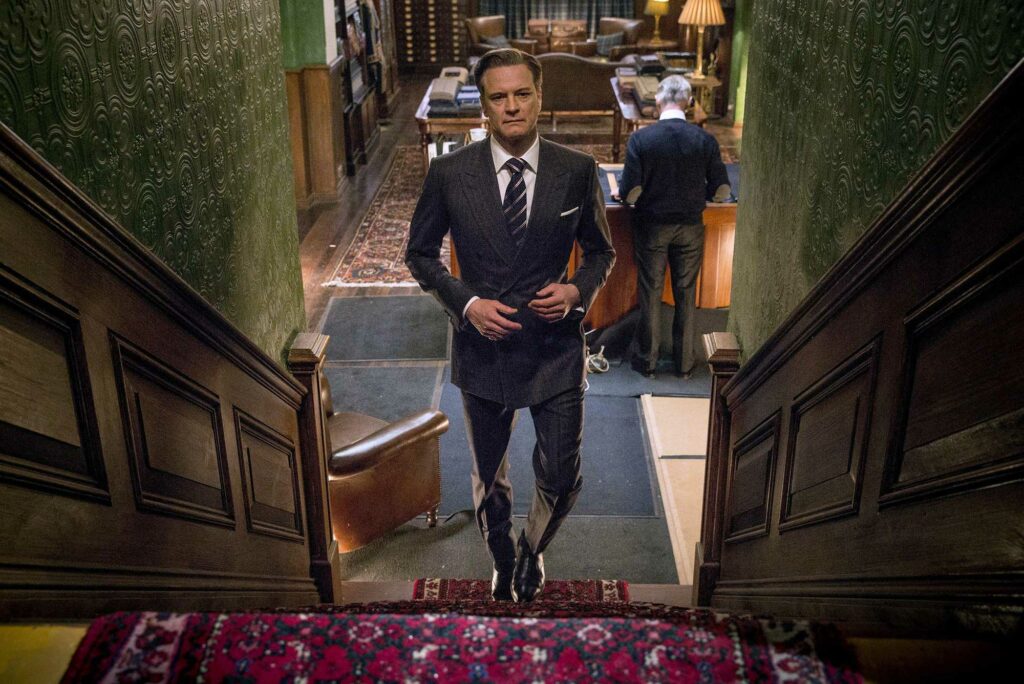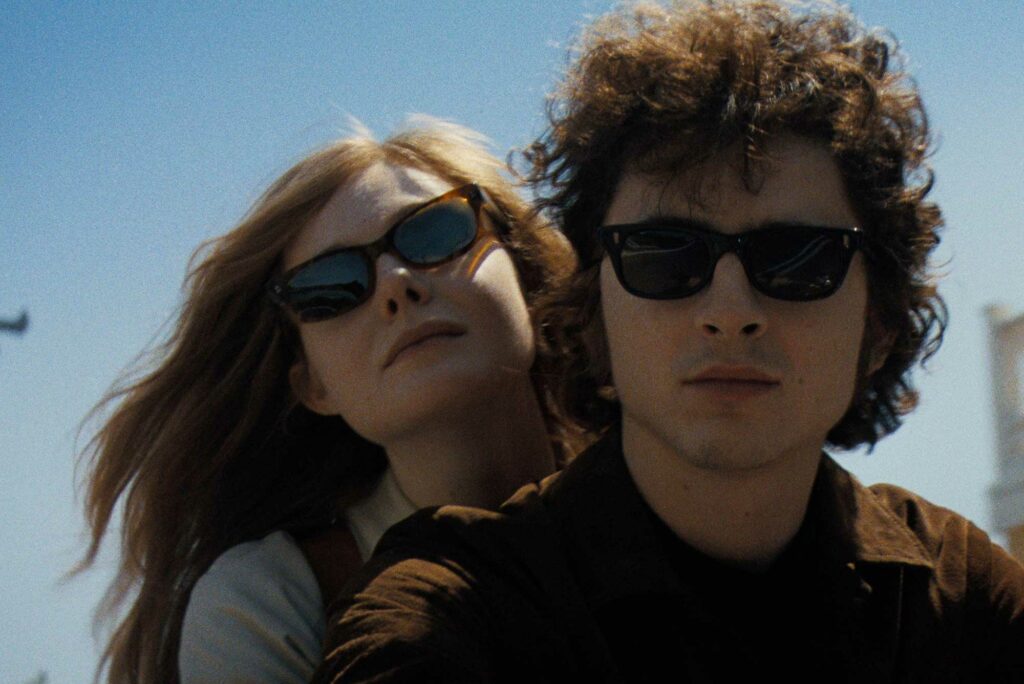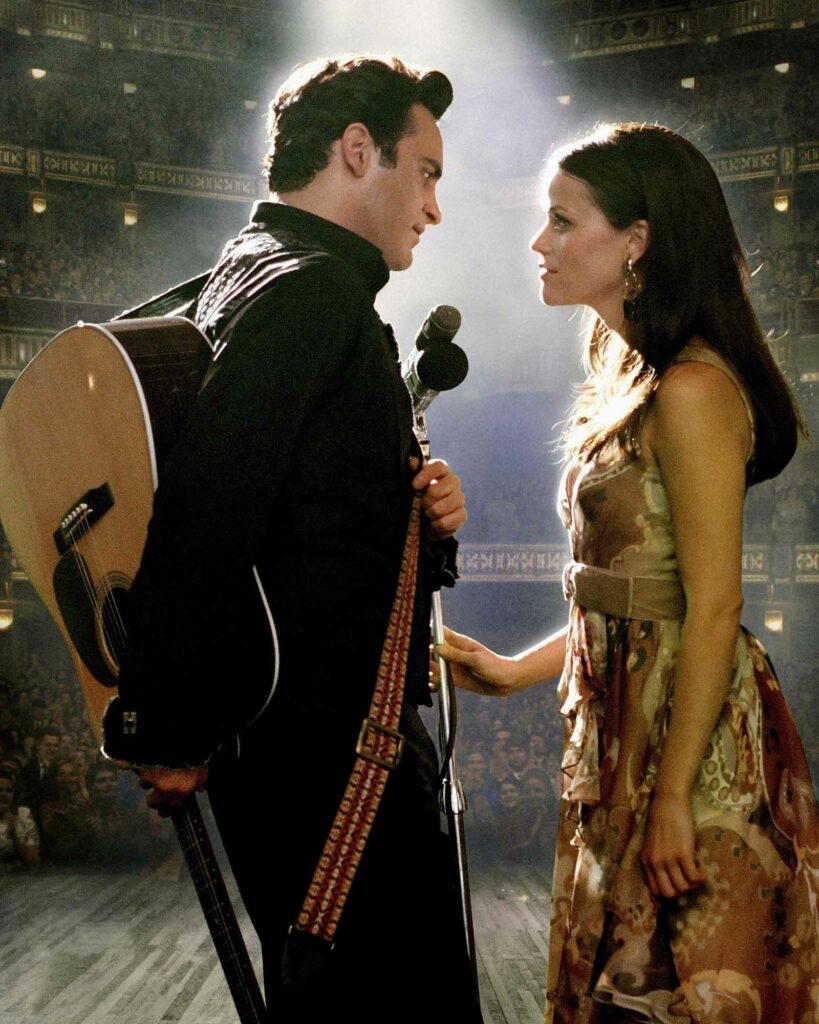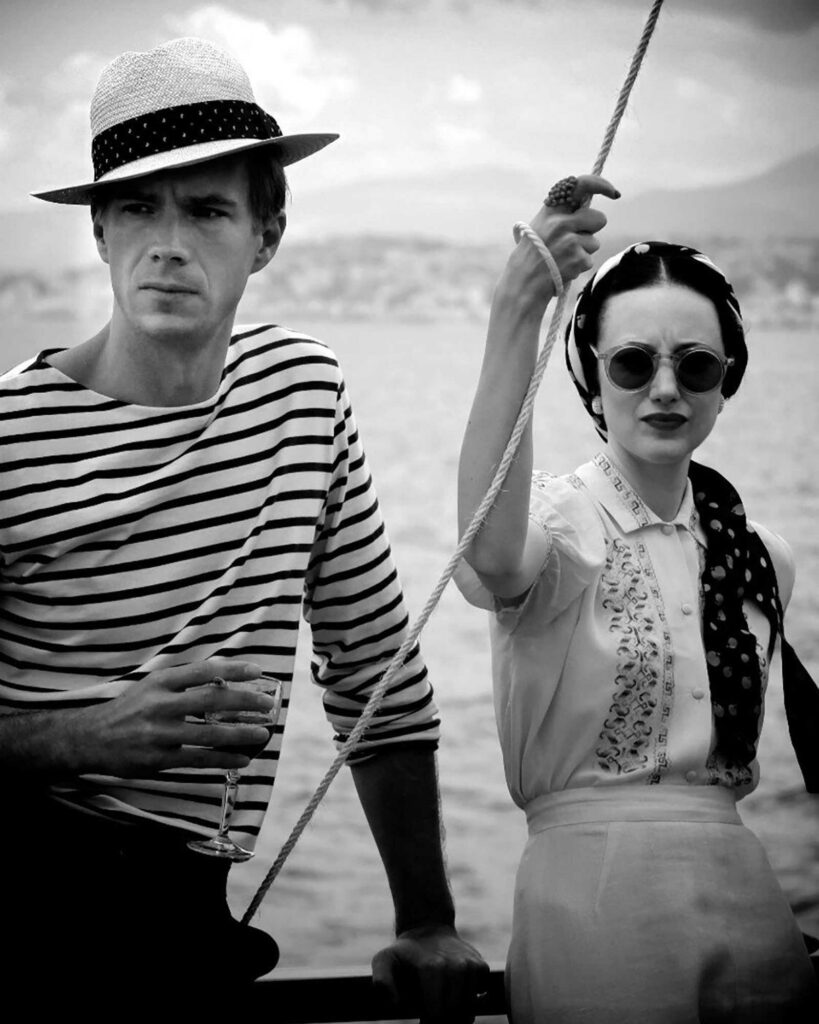Photographs by GREG WILLIAMS
Interview by GREG WILLIAMS/JANE CROWTHER

Monica Barbaro is looking for resonance in her guitar and career as she goes shopping down Tin Pan Alley with Greg Williams.
It feels inappropriate to be looking at electric guitars,’ Monica Barbaro laughs as she runs her fingers along the contours of an ES-330, ‘given the context of our film’. I’ve brought the San Francisco native to London’s famous Denmark Street (so-called ‘Tin Pan Alley’) for some window shopping during a break in awards-season screenings for A Complete Unknown, James Mangold’s biopic of Bob Dylan, tracing the musician’s transition from 19-year-old folk singer to Fender Stratocaster-playing icon at 24. Dylan’s use of a plugged-in instrument was incendiary to the folk scene in 1965 and his ascent was watched and helped by established acoustic singer-songwriter, Joan Baez. Barbaro plays Joan to Timothée Chalamet’s Bob – and she was not a guitar player when she got the job. Now, she can spot a Martin at twenty paces and carries a fingerpick in her pocket at all times.
It’s mid-December and there’s a chill in the air as we walk the London street famous as the hub of music publishing, where Elton John brought songs to sell, Bowie lived in a van for some time, the Stones recorded at Regent Sound Studios and Dylan visited in the ’60s. As we pause to peer in the windows of a shop selling drum kits, Barbaro recalls that her role on Top Gun: Maverick was the first to require musical training (alongside the G-force flights and aerial combat classes). ‘I was supposed to drum in Top Gun. I was in drumming lessons for two straight weeks. I remember, at one point, I started crying over the drums, because I was learning to fly, I was drumming, I was learning to play pool, working out – it was crazy. And they said, “We’re cutting that.” Thank God. It would have been a very bad idea!’
Her role as the first female pilot in the franchise, Lt. Natasha ‘Phoenix’ Trace, catapulted the actor to the awards circuit and to greater recognition, and gave Barbaro a heavyweight champion in Tom Cruise – he turns up to support her at the screening later that evening. ‘Tom cares so much about making a great quality film,’ she says when considering what she learned from Cruise. ‘There’s less settling in filmmaking. If you’re going to commit all of your time and your life, and sacrifice relationships for it, you want – at the end of the day – for it to be something you’re really proud of, and not just necessarily making something people fold laundry to. To be a working actor, it’s really satisfying to get to be a part of something where the standard level is high, and you’re working with the best in the industry. I’ve gotten to do that, which is crazy.’
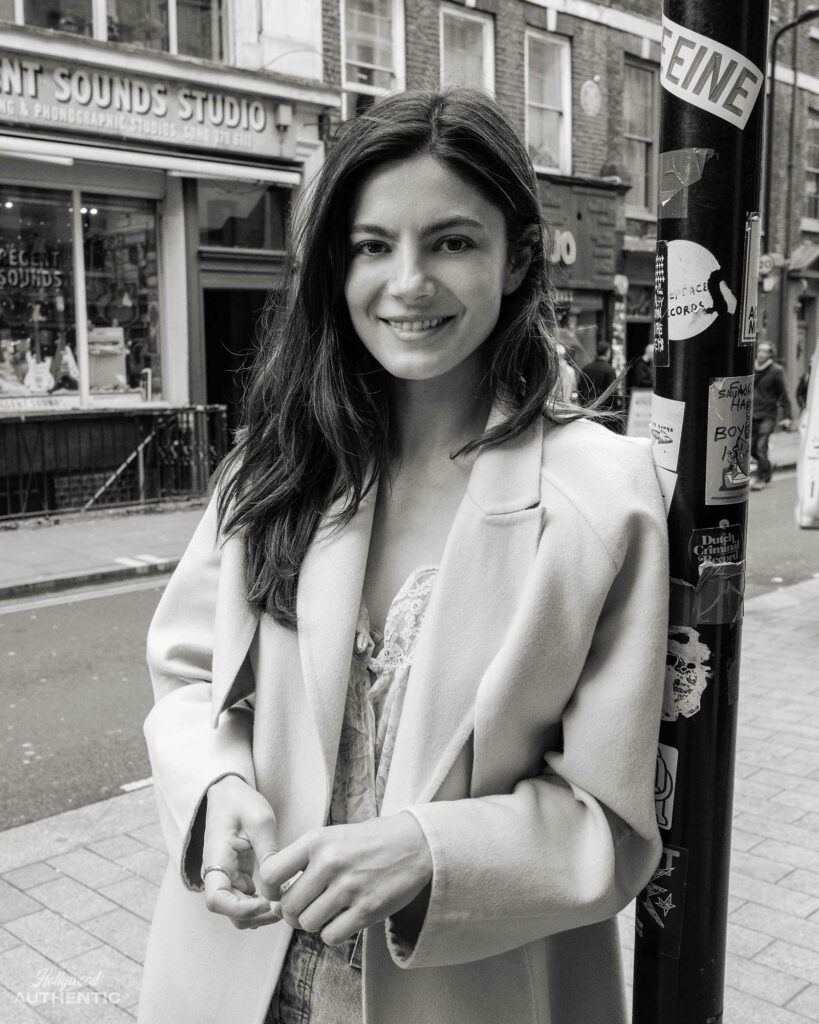
If you’re going to commit all of your time and your life, and sacrifice relationships for it, you want – at the end of the day – for it to be something you’re really proud of
Top Gun: Maverick also got her the audition for Baez, a role that Barbaro always knew would test her musically. ‘I played the ukelele for fun, but I wasn’t a guitarist at all. I’d tried, but then my fingers would hurt, and all the songs I liked were really hard to play. So I kept quitting – which is easy to do when you don’t have any deadlines or anything.’ She had a deadline of five months to perfect a number of Baez’s songs when she landed the part. ‘Then the strikes happened, so I had more time to practise. And that was helpful. I almost lost the job in that time because of scheduling stuff, but I just kept practising. And that’s when I learned to play and sing at the same time. I couldn’t train with any coaches, so I was just playing and singing, and I finally learned how to do both at the same time.’
She still plays now but has the bug to learn more. ‘I’m not super-comfortable strumming because I’m still really shy about it; fingerpicking you can do quietly.’ We walk to Hank’s Guitars, a fixture on Tin Pan Alley housed in a Grade II listed 17th-century building and specialising in vintage guitars where artists such as Keith Richards, The Edge and Noel Gallagher have shopped. An Aladdin’s cave of six-strings, Hank’s is wall-to-wall with guitars; upstairs – acoustics, downstairs – electric. We start upstairs where Barbaro makes a beeline for the Martins, Baez’s signature instrument. A vintage poster for a Baez album is on the wall next to them. ‘The sound of these is so beautiful,’ Barbaro says, taking one down and perching on a leather chair, surrounded by instruments. ‘I feel very lucky that I own one now. I’m not sure if production gave it to me, or if I stole it, but I’m not giving it back!’
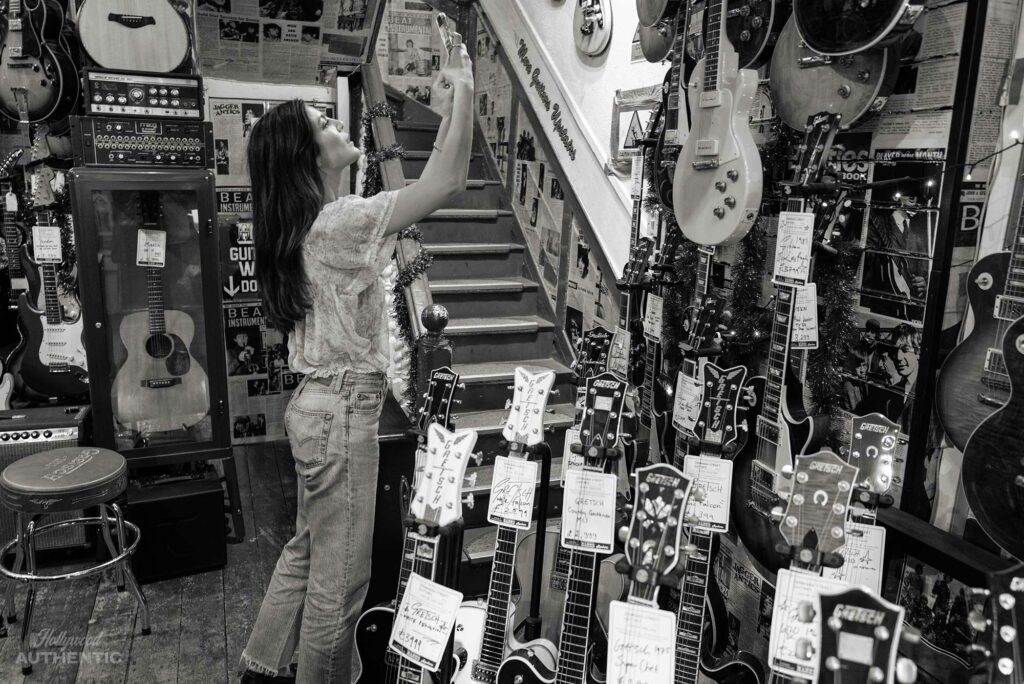
She reaches into her pocket and pulls out a fingerpick, beginning to noodle on the strings, playing There but for Fortune. It’s the fingerpick she used throughout filming as Joan. ‘I actually carry it around all the time now because it reminds me that I want to keep playing guitar, and also it feels like this totem of proof that it happened, because it’s so surreal to me that I even got to shoot this movie at all. Putting it on feels like a self-belief thing that’s kind of magical.’ As she strums, she shakes her head and claims she’s rusty. ‘The challenge when you finish something like this is: “Can you keep yourself practising once it’s all said and done?” Because we were training hours and hours a day, and we were filming for hours and hours. Your skill level just sky rockets, and then you wrap, and you need to do other things that don’t require a guitar…’
She switches songs; ‘This is a really pretty one, Girl from the North Country.’ It’s an apt tune given she’s a NoCal girl, born in San Francisco, raised in Mill Valley, now living in LA. From a young age she trained as a dancer; ballet predominantly, while also studying Flamenco, Salsa and West African dance. She didn’t know it at the time but Baez’s son, Gabe Harris, drummed for her classes; she only realised when she began researching Baez. Growing up the daughter of divorced parents – a neurosurgeon Dad and a teacher’s assistant Mum – Barbaro was encouraged to embrace the arts. ‘My dad was the first person in his family to even go to college, and grew up very blue collar, Italian-American. I think for me, he’s definitely the person I saw as the textbook American dream. It’s an “anything is possible” kind of belief structure that was given to me by him. And he encouraged me to stay in the arts, because, for him, that felt like something he couldn’t do. But he worked really hard so that I would have the financial stability to be free enough to take the risk of becoming an artist. So I felt very supported by that. My dad is always like, “You’re not lucky. You’ve worked really hard. You’ve prepared.”’
Part of that preparation was moving to New York to study dance at New York University. ‘Dance taught me how much it takes to learn something, and to learn something to the point of absolute believability that you’ve been doing that thing for your lifetime. Dancers can immediately tell when someone is a dancer or not, even just in the way they walk. So to hold a guitar like a guitar player, it takes years and years of carrying that guitar around, and playing it, and knowing how to wield it in situations. So the challenge when it came to playing Joan was immense.’
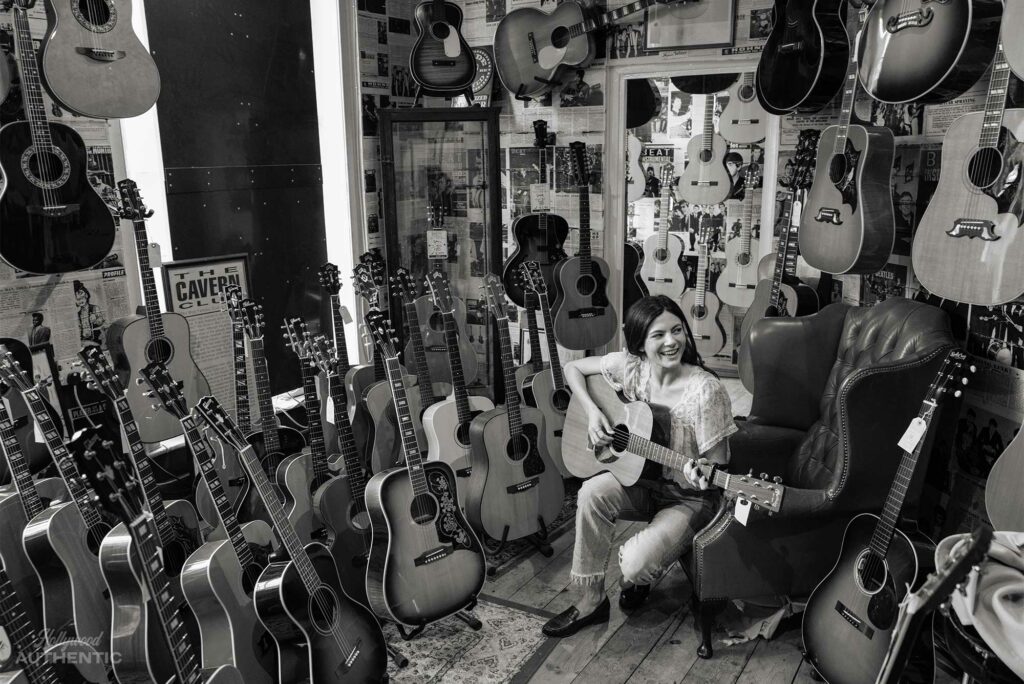
Immersing herself in Baez’s work, documentary and memoir, learning to play and sing, Barbaro also collaborated with DoPs on her look, creating bespoke teeth and hair, and – with Hollywood Authentic’s resident columnist and the film’s costumer designer, Arianne Phillips – finding the clothes. Though the cast pre-recorded their tracks for the film, when it came to shooting, the decision was made they would all sing ‘live’ on set. That meant Barbaro singing The House of the Rising Sun in a Greenwich club and re-enacting on-stage pairings with Dylan, most notably at the Newport Folk Festival (re-created in a park in New Jersey) and filming at the Chelsea Hotel.
‘All through my pre-teens, all I wanted to do was move to New York and be a New Yorker. And I got to do that in college. Our dance studio was on 2nd Avenue, between 6th and 7th. When I go back there I do reflect on who I was then, and everything I hoped for, and everything I wanted, and wasn’t sure I could ever accomplish. And things I didn’t expect in this lifetime, like this movie.’ Filming A Complete Unknown on location in NY was a full circle moment for the actor. ‘I remember just acknowledging that I was a working actor, and having that feel monumental, walking on those same streets like, “Wow. Remember when you were so cold and broke and tired all the time, and training in dance, and being sweaty, running from one class to another, and trying to keep your head on straight, and barely doing so?” And then to just be like, “OK, now I’m financially stable, doing what I love. That’s huge to me.”’
Barbaro also talked to Baez on the phone, and told her she’d previously worked with her son. ‘She got a kick out of that! It’s got to be so weird to talk to somebody 50 years your junior who’s going to put on some long hair and play you. But she was really generous with her time. We had a great conversation. Folk is a music of authenticity. It’s not over-polished or adorned. I think they are that way about themselves. But anything that she gave me that wasn’t in her memoirs, I feel protective of, and I’ll keep that to the conversation.’
The authenticity of Baez, Dylan and the folk community is something Barbaro likes and hopes to emulate in her own life. ‘They are just very honest. They’re not holding back. They’re not trying to polish an image. Like today, I was given a couple of outfit options by my stylist, and I was like, “This is Hollywood Authentic. I think I want to wear my own clothes, and have my natural hair.”’ The idea of living fully in the present is something that she also subscribes to after the whirlwind of awards season with Top Gun: Maverick that culminated in the Oscars ceremony. ‘When I was there with Top Gun, I felt so lucky to be there, and just tried to be so present in that moment. I just kept thinking: “Embrace it. See it. Feel it.’ The awards are very helpful to films and their future promotion, and they can change an actor’s life. But one of the coolest things about being in that conversation is getting to have that sense of community in a space that can be quite intimidating professionally. It was just so exciting to be there, and to watch people make speeches and honour their fellow nominees, and really truthfully do so. It’s not fake. That was so cool.’
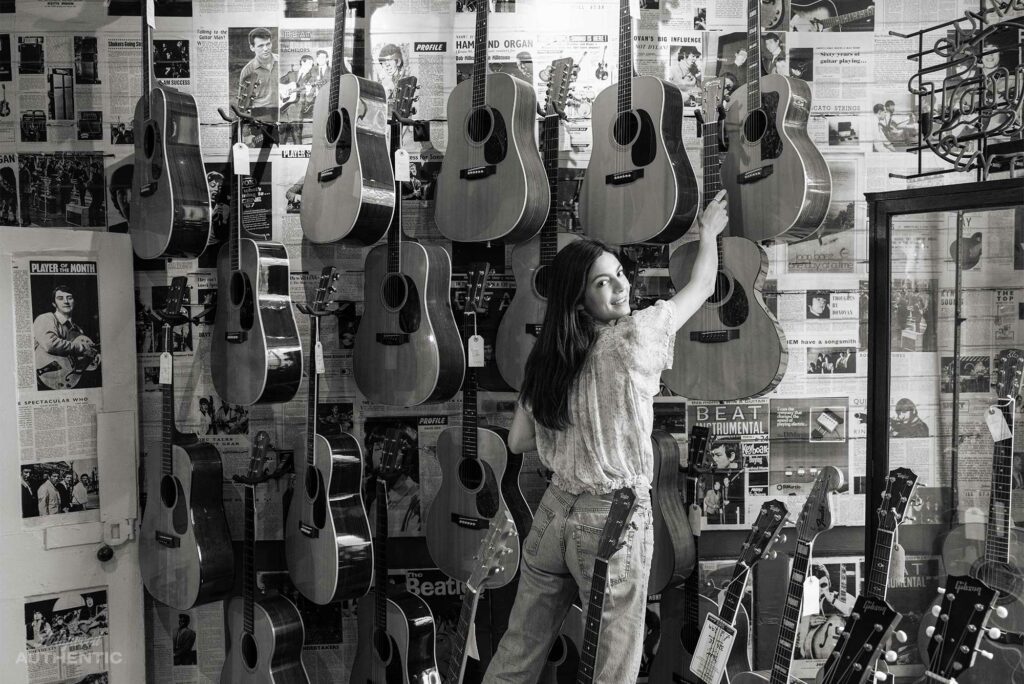
I would love to do theatre. I’ve always wanted to. I know it from a place of dance, but it’s also the thing that made me want to be an actor
We return downstairs to look at eclectic guitars so Barbaro can ask the staff advice on an entry point instrument. As they talk over the counter, she spots a vintage Martin in the window. It’s 124 years old with a short neck and a £13K price tag. She’s given the guitar and she turns it reverentially in her hands, fingerpicking on it while she’s shown electrics. She’s looking for resonance and coos over a vintage 1966 ES-330, similar to the Casino owned by John Lennon. Despite embodying a folk hero and playing all her songs ‘live’ during filming, Barbaro is still shy about her playing; ‘I want to be able to plug into headphones.’ She swaps the acoustic for the electric, sitting comfortably in the shop talking hollow vs semi-hollow body while she plucks the strings.
She considers what she’d like to take on next – along with transferring her skills to eclectic. ‘I would love to do theatre. I’ve always wanted to. I know it from a place of dance, but it’s also the thing that made me want to be an actor – getting to do A Midsummer Night’s Dream when I was 12. Plus, I’d just love to pivot into a totally different genre and get to learn a new skill-set. I just like the newness of it.’ She’ll film Bart Layton’s Crime 101 in London in the new year alongside Chris Hemsworth, Mark Ruffalo and Halle Berry. It is, she promises, a pivot. But for now, she needs to work her way to a much-needed Christmas break and make some decisions on what’s next in 2025. One of those decisions might be whether to buy the gleaming ES-330. As we part on the street she tells me: ‘I almost walked out of there having dropped £8,000 on a guitar.’ She laughs. ‘I was like, I’ll think about it. I’ll go away and sleep on it. But I’m still in town, so I guess I could go back and get it…’
Photographs by GREG WILLIAMS
Interview by GREG WILLIAMS/JANE CROWTHER
A Complete Unknown is in cinemas now


